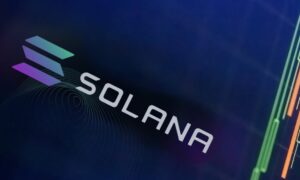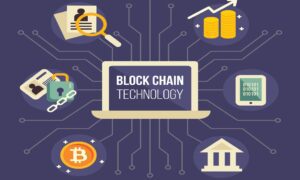Blockchain technology, known primarily for powering cryptocurrencies like Bitcoin, has vast potential beyond the realm of digital currencies. Its applications in trade finance and global supply chains are particularly promising, offering enhanced transparency, efficiency, and security. As businesses and industries strive to optimize operations and reduce risks, blockchain stands out as a revolutionary tool capable of transforming the way global trade and supply chains function.
Understanding Blockchain Technology
Blockchain is a decentralized digital ledger that records transactions across multiple computers. This ensures that the transaction data is immutable and transparent. Each transaction is stored in a block, and these blocks are linked together to form a chain. Additionally, This structure prevents unauthorized alterations and ensures that every transaction is verifiable by all participants in the network.
Key Features of Blockchain
Decentralization:
Unlike traditional centralized databases, blockchain operates on a peer-to-peer network.
Transparency:
All participants can view the transaction history, ensuring accountability.
Security:
Cryptographic techniques safeguard the data, making it tamper-proof.
Immutability:
Once added to the blockchain, data cannot be altered, ensuring integrity.
The Role of Blockchain in Trade Finance
Trade finance involves various financial instruments and products that facilitate international trade. These include letters of credit, guarantees, and insurance. Traditional trade finance processes are often paper-based, slow, and susceptible to fraud and errors. Blockchain technology can address these challenges by digitizing and automating processes.
Enhancing Transparency and Reducing Fraud
Blockchain can provide a single source of truth for all parties involved in a trade transaction. By recording each step on a shared ledger, blockchain ensures transparency and traceability. In addition , This reduces the risk of fraud, as all transactions are visible and verifiable.
Streamlining Processes
Trade finance involves multiple intermediaries, including banks, insurers, and customs officials. Each party maintains its records, leading to inefficiencies and delays. Ultimately, Blockchain can streamline these processes by providing a unified platform where all parties can access the same data. This reduces redundancy, speeds up transactions, and lowers costs.
Smart Contracts
Smart contracts are self-executing contracts with the terms of the agreement directly written into code. They automatically execute and enforce the contract conditions when predefined conditions are met. In trade finance, smart contracts can automate processes such as payments and compliance checks, further reducing delays and errors.
Transforming Global Supply Chains
Global supply chains are complex networks involving multiple stakeholders, including manufacturers, suppliers, logistics providers, and retailers. Ensuring efficiency, transparency, and accountability in these networks is challenging. Furthermore, Blockchain technology offers solutions to many of these challenges.
Improving Traceability
One of the significant advantages of blockchain in supply chains is enhanced traceability. By recording every transaction on a blockchain, companies can track the movement of goods from origin to destination. This is particularly beneficial in industries like food and pharmaceuticals, where traceability is crucial for safety and compliance.
Enhancing Efficiency
Blockchain can streamline supply chain operations by automating processes and reducing manual intervention. For instance, it can automate inventory management, order processing, and payment settlements. This reduces administrative costs and speeds up operations.
Ensuring Authenticity
Counterfeit products are a significant issue in global supply chains. Blockchain can help ensure product authenticity by providing a verifiable record of each product’s journey through the supply chain. Moreover , Consumers and businesses can scan a product’s QR code to verify its origin and authenticity, reducing the risk of counterfeit goods.
Case Studies and Real-World Applications
IBM Food Trust
IBM Food Trust is a blockchain-based platform designed to enhance transparency and traceability in the food supply chain. It allows stakeholders to track the journey of food products from farm to table. Thus, Major companies like Walmart and Nestlé have adopted this platform to ensure food safety and quality.
TradeLens
TradeLens is a blockchain-based platform developed by Maersk and IBM to improve efficiency and transparency in global trade. It digitizes and automates supply chain processes, reducing paperwork and delays. Over 150 companies, including ports, shipping lines, and customs authorities, have joined the TradeLens network.
We.Trade
We.Trade is a blockchain-based trade finance platform that simplifies and secures international trade for small and medium-sized enterprises (SMEs). In addition, It uses smart contracts to automate trade finance processes, reducing the risk of non-payment and improving trust between trading partners.
Challenges and Considerations
Scalability
Blockchain networks must handle a high volume of transactions quickly to be viable for large-scale supply chains. Current blockchain technologies face scalability issues, with limited transaction processing capabilities.
Interoperability
For blockchain to be widely adopted in trade finance and supply chains, different blockchain networks must be able to communicate and work together seamlessly. Achieving interoperability between various blockchain platforms is a significant challenge.
Regulatory and Legal Issues
The regulatory environment for blockchain is still evolving. Companies must navigate a complex web of regulations and compliance requirements to implement blockchain solutions. Legal frameworks must also be developed to address issues related to smart contracts and digital identities.
Initial Costs and Integration
Implementing blockchain technology can be costly and time-consuming. Companies need to invest in new infrastructure, train employees, and integrate blockchain with existing systems. These initial costs and efforts can be a barrier to adoption.
Future Outlook
Despite the challenges, the future of blockchain in trade finance and global supply chains looks promising. Ongoing advancements in blockchain technology, including improvements in scalability and interoperability, will address many current limitations. Moreover, As regulatory frameworks evolve, they will provide clearer guidelines for implementing blockchain solutions.
Potential Innovations
Integration with IoT:
Combining blockchain with the Internet of Things (IoT) can further enhance supply chain visibility and automation. Furthermore, IoT devices can provide real-time data on the condition and location of goods, f which can be recorded on the blockchain for enhanced traceability.
Artificial Intelligence:
AI can analyze blockchain data to provide insights and predictions, helping companies optimize their supply chain operations.
Collaboration and Standardization
Industry collaboration and the development of standards are crucial for the widespread adoption of blockchain. Moreover, Initiatives like the Blockchain in Transport Alliance (BiTA) are working to establish standards and best practices for using blockchain in supply chains.
Conclusion
Blockchain technology has the potential to revolutionize trade finance and global supply chains. By enhancing transparency, efficiency, and security, it can address many of the challenges faced by these industries. Additionally, While there are hurdles to overcome, ongoing advancements and collaborations will pave the way for broader adoption of blockchain solutions. As businesses continue to explore and implement this technology, the future of trade and supply chains looks brighter and more efficient.



































